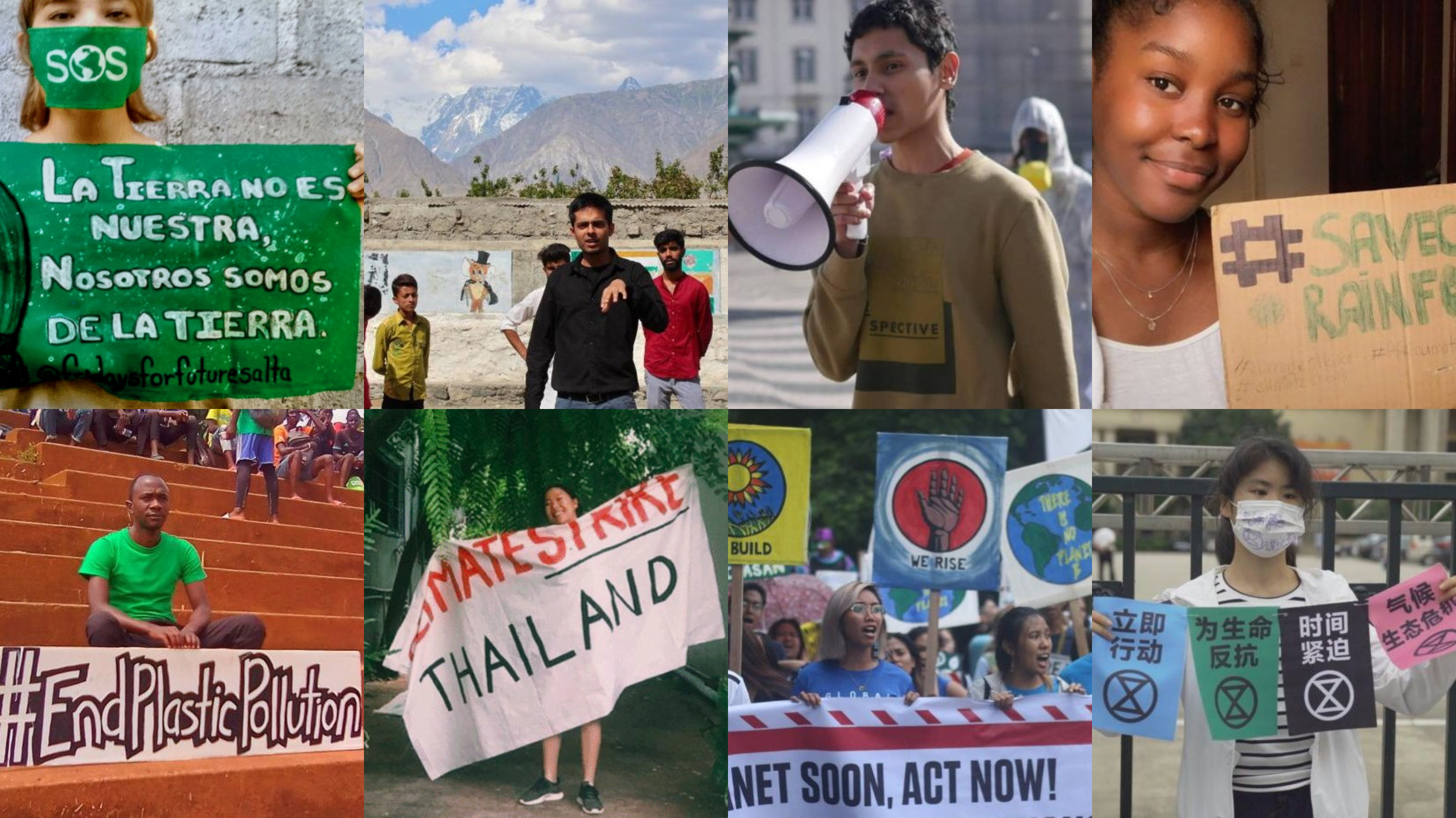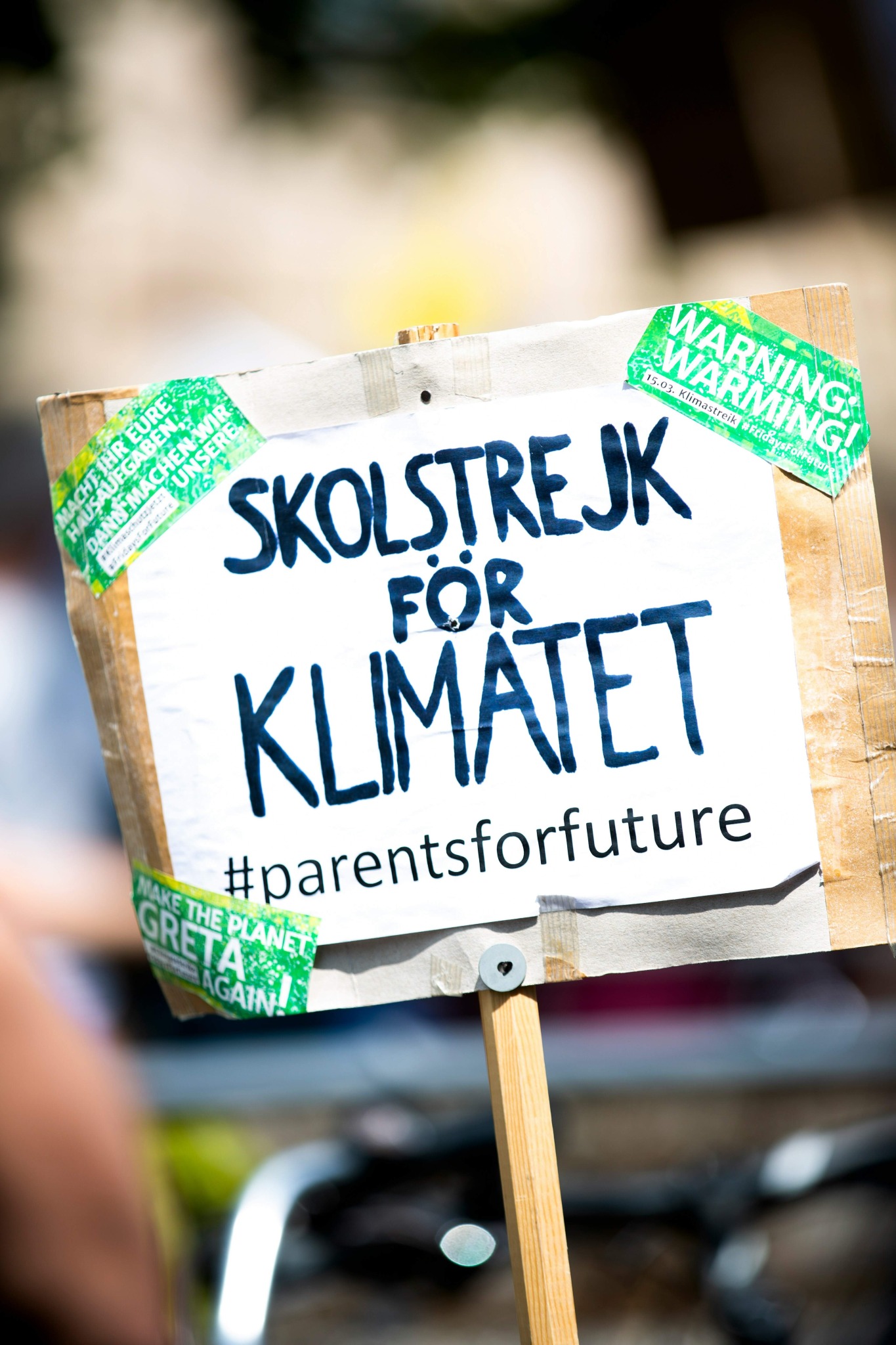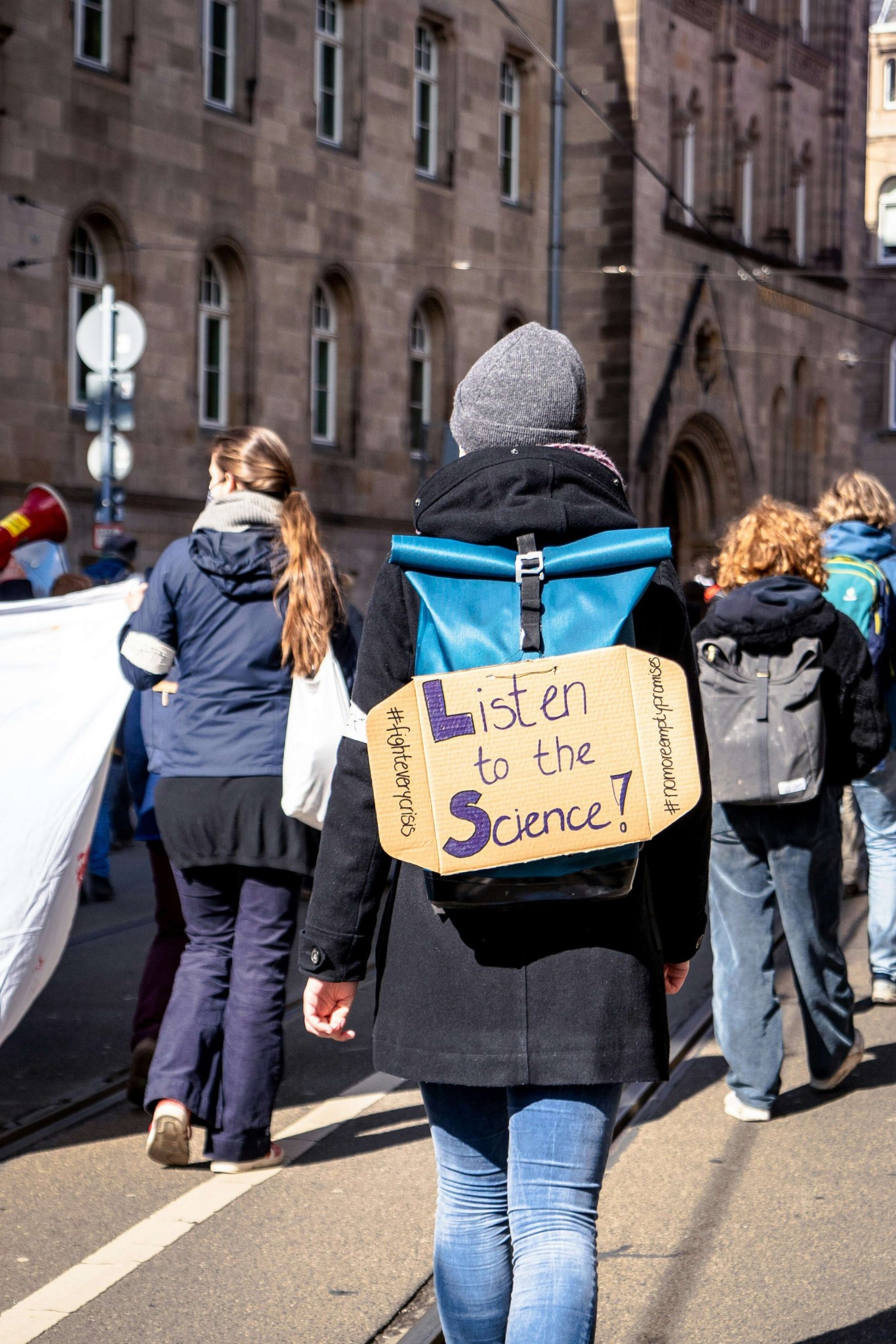As social media has proliferated across every aspect of society, the controversy surrounding its impact on the biggest narratives of our time has come to the fore.
There’s no question that social media has shaped discourse surrounding climate change. From daily news surrounding environmental disasters to movements such as Fridays for Future, social media has put the biggest topic of our time in the palm of our hands. However, the nature of social media also gives way to opportunities for mistruths, omissions and agendas. Often hard to separate from fact, this has a real impact on societies. Obviously, this also applies to our understanding and, therefore, action relating to the climate crisis. But to what extent? And do these disadvantages outweigh the good?
Here we take a deep dive into the impact social media has on the global fight against climate change. And, suggest how conscious users can mitigate it.
Youth participation could mean better solutions
For many, social media is a primary news source. Almost 62 percent of US adults get their news from social media platforms, a number which is set to rise. The number for young people is much higher, with 91 percent of US Gen Z and Millenials getting their news from social media at least weekly. In fact, according to a Reuters Institute study, younger audiences view traditional media as no longer relevant when it comes to news content. Indeed, broadcasters and newspapers are struggling to build relationships with people under 35 as they tend to consume news via social media.
But, is that a bad thing? An essential component of social media is that it necessitates engagement. Users can like, comment and share important stories to their communities in a way that’s difficult with traditional media. Researchers have long argued that the public health community could do more to include younger groups in climate decision-making. The United Nations Development Program even states that “meaningful youth participation is a pre-condition for the success of climate action”.
Voices of Climate Justice: The Full Interview Series
In the interview series “Voices of Climate Justice”, we talk to environmental activists from the Global South about their experiences, activism, opinions and hopes for the future.
Young people engaging with topics surrounding the climate crisis has undoubtedly shaped its discourse. Young climate activists, for example, are a familiar presence in reports of UN climate talks. But what regularly goes unnoticed in climate discussions is the physical work that young people spearhead—often facilitated by social media. Elizabeth Wanjiru Wathuti, founder of the Green Generation Initiative that’s planted over 30,000 trees in Kenya, for example.
Of course, we couldn’t not mention Greta Thunberg here. Now a global figure in the climate conversation, Thunberg founded the Fridays for Future movement through her weekly strikes outside Stockholm’s parliament. These went viral on social media and mobilised millions globally to join her, creating the first global strike for climate action of its kind. Its real-world impact was significant. FFF activism has been touted as a reason for the German Green Party’s electoral success, as well as encouraging sympathisers to fly less and eat less meat. Following the mass 2021 FFF protests across 60 countries, the German government ruled that the government’s climate policies were insufficient.
But, as First Lady of Kenya, Rachel Ruto, wrote for the Guardian in 2021, “the knowledge, potential and power of young people are too often kept on the sidelines”. With more than 84 percent of young people in Europe using social media daily, and similar numbers across the Global North, social media is a direct line to their voices. And beyond talk, social media is a staging ground for real, tangible action.
Awareness is one thing. What about actual policy change?
However, whilst many young people view social media as vital for amplifying advocacy messages, some express scepticism about its effectiveness in influencing actual decision-making. In one recent Australian study, young people questioned whether social media had the power to influence meaningful action from those that they ultimately held responsible for acting, namely politicians, “lawmakers” and “higher powers”.
One 23-year-old from South Australia claimed that “[Social media is] not reaching the audiences of people in power [that] can really make a difference”. Another from Victoria agreed; “… the lawmakers are typically not on these platforms”. A common conclusion was that, while awareness spreading is an important function of social media regarding climate action, it was pointless if the messages weren’t getting through to the top. “[Social media] is effectively spreading awareness, but I don’t think [it’s] gaining the traction [it needs] to implement change”.
But, awareness is arguably a positive outcome in and of itself. A global survey in 2021 found that more than half of people aged 16–25 felt sad, anxious or powerless, or had other negative emotions about climate change. Researchers have continuously demonstrated that the climate crisis impacts all aspects of adolescent well-being. Millions of us are expected to experience “a chronic fear of environmental doom.” Social media and its potential for engagement and community building has been touted as a genuine antidote. For instance, when used correctly, social media helps people find new friends, create communities, share “good news” stories and to feel heard. In an often miserable cacophony of opposing and competing voices, solidarity can engender hope.
Beware: the power of the algorithm
Social media platforms are not run by the young or the pro-climate; the biggest commercial conglomerates in the world set the rules. To increase views, engagement and the advertising revenues that partially fund them, social media relies on algorithms. By design, these keep users active by showing them relevant content based on their activity.
The outcome? A society that exists on an ever-narrowing diet of information with ever-increasingly polarised views.
Indeed, a 2022 study in Nature showed a dramatic deepening of ideological polarisation driven by a fourfold increase in right-wing activity compared with pro-climate groups. The study identified that “contrarian views and accusations of hypocrisy have become key themes in the Twitter (X) climate discussion since 2019.” For anyone who uses social media regularly and has accidentally left their pro-climate ‘bubble’, this comes as no surprise.
Misinformation vs disinformation
Misinformation involves unintentionally sharing false or incomplete information about climate change, often due to mistakes or misunderstandings. An example is greenwashing, where businesses exaggerate their environmental efforts.
Disinformation, however, is the intentional spread of false information by groups, such as climate deniers, to undermine climate science and policies.
What’s more troubling is that many voices coming from the anti-climate group are based on mis- or disinformation. This is something that social media companies have been widely lambasted for. Given the increasing volume of people accessing their news solely from social media, it’s a powerful argument against social media in the debate surrounding its impact on important issues.
According to Rebecca Pearl-Martinez, executive director of Boston University’s Institute for Global Sustainability (IGS), a “small but loud number of voices” are driving the spread of climate misinformation. Social media platforms, along with manipulated photos and videos, have made it easier for such misinformation to proliferate—particularly when tied to conspiracy theories. One example is the backlash against the urban planning concept of 15-minute cities, which has become a target for baseless claims from the far right.
The global coalition Climate Action Against Disinformation has reported a sharp rise in climate denial content, especially on Twitter (now X), where hashtags like #ClimateScam have surged since Elon Musk’s takeover of the platform. The European Digital Media Observatory (EDMO), a fact-checking network funded by the EU, found that climate-related disinformation ranked as the third most detected type of false information in the EU in 2022, behind COVID-19 and the war in Ukraine. These narratives range from outright denial of human-caused climate change to more subtle attempts to undermine trust in scientific consensus, ultimately delaying political action on the climate crisis.
We spoke to Alessandro Galeazzi, an expert on social media from the Department of Mathematics at the University of Padova, about the misinformation he’s seen. He told us that;
“During COP21, some of [the] ‘climate sceptics’ were still saying that climate change is not happening. In COP26 the narrative shifted… [to] “[climate change] is not human driven”, “it has always been so hot” (referring to heatwaves) and cherry-picking events to support the thesis of no or moderate climate change by, for example, highlighting extreme cold weather.”
However, he points out that it’s not always climate sceptics that spread misinformation: “Some climate activists occasionally posted or shared content that was very emotionally loaded which could be classified as misinformation, but it was a much less common event.”
Social Media Platforms’ Climate Misinformation Leads to Action Delay – Report
In times when the most powerful tool for spreading information is social media, do we really know how these companies deal with climate disinformation?
The potential outcome of the spread of mis- and disinformation is troubling and could have far-reaching consequences according to Galeazzi.
“Nigel Farage was advocating for a NetZero referendum, which could prevent the adoption of appropriate mitigation policies. The spread of misinformation could [also] persuade people to adopt false beliefs, thus increasing the number of people unwilling to adopt a more climate-friendly lifestyle.”
The battle against mis- and disinformation on social media
However, work is being done. 2022 saw the Intergovernmental Panel on Climate Change recognise for the first time that “[r]hetoric and misinformation on climate change… have contributed to misperceptions of the scientific consensus.”
Advocacy groups like Climate Action Against Disinformation, as well as the EU, the UN and the WHO are working to call out and counter the misinformation. Public awareness campaigns, fact-checking initiatives, policy recommendations and partnerships with social media platforms are all being utilised. For example, the EU Climate Pact, launched as part of the European Green Deal, encourages action on climate change by promoting accurate information and climate science. Likewise, the United Nations is developing a “Global Code of Conduct for Information Integrity”. This code aims to tackle the growing problem of disinformation at a global level by encouraging governments and private companies to adhere to guidelines on fact-based information dissemination.
However, it’s proven difficult to get social media companies to play ball. In 2023, X announced its withdrawal from the European Union’s code to combat disinformation. Critics have noted an increase in disinformation on the site since Musk’s 2022 takeover and subsequent reduction in moderation efforts. The code, launched to prevent profiteering from disinformation and fake news, as well as curbing the spread of bots and fake accounts, was voluntary. Luckily, the EU’s internal market commissioner Thierry Breton warned that X still must comply with the EU’s Digital Services Act (DSA) which requires platforms with over 45 million EU users to combat disinformation and illegal content. Other major tech firms like Meta, TikTok and Google remain part of the disinformation code, for now.
Max Falkenberg from the Institute for Sustainable Resources at UCL studies how climate narratives are shared on social media. He told RESET that engaging with misinformation and climate scepticism is the way forward. “Some would argue that such claims are based on poor evidence and are just a delay tactic. But in my opinion, we need to respect these concerns. The burden is on us as climate communicators to positively engage with these individuals, and not to simply label genuine concerns as misinformation.”
Infobox: A thought about social media’s energy cost
It’s important to note that whether social media companies tackle climate misinformation or not, they are energy-consumptive by nature. This energy usage—the power it takes to install, update and run the apps—adds up.
According to an analysis by the market research firm Compare the Market, TikTok generates the most emissions of any social media app per minute of use at 2.63 grams of CO2. That means that those who spend 145 minutes on TikTok every day for a year create nearly 140kg of excess carbon. That’s the equivalent of driving a standard car for more than 563 kilometres.
Social media companies are not strictly to blame for our reliance on a global system of fossil fuel production. If we switched to green energy sources, their impact would naturally decline. However, it’s fair to assume that more social media equals higher energy usage worldwide. And, as we hurtle towards average global temperatures hitting and exceeding 1.5 degrees C, every reduction in usage helps.
So, where does all this leave us?
Social media amplifies activist voices, empowers young people, raises awareness and fosters global connections. This is vital for action, and higher powers are paying attention. In Falkenberg’s view, “social media has probably been a net positive with all the major climate movements of the last few years.” However, he points out that this form of action is still very West-focussed. “Where there are still major open questions is how social media is shaping climate action outside the West. This will be key in the future, especially as the emissions of lower-income countries grow as part of their development.”
Likewise, the very mechanisms that make activism possible make social media vulnerable to the spread of misinformation and disinformation. This has been proven to derail progress and deepen societal divides. While awareness is essential in tackling the climate crisis, it alone is insufficient without concrete policy change. As platforms continue to evolve, it’s imperative that they take responsibility for curbing harmful content. Simultaneously, users must remain vigilant in seeking reliable information. But, one thing’s clear. Social media isn’t going anywhere. Its effectiveness in inspiring climate action will hinge on its ability to balance these competing forces, and how actively society engages with the truth.












